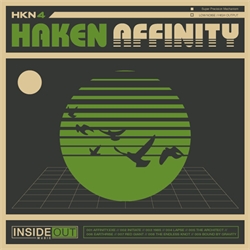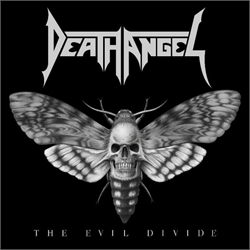Текст и слова песни American Odds & Ends – The Star Spangled Banner History
The Star Spangled Banner inspired the American national anthem, which begins with the lyrics, "O say can you see by the dawn's early light." The words were written by Francis Scott Key, a young Washington attorney who, during the War of 1812, sailed to the British fleet to obtain the release of a captured American.
Key was detained by the British and was forced to witness from his ship the bombardment of Fort McHenry near Baltimore during the night of September 13-14, 1814.
Defended under the command of Major George Armistead, the fort withstood the attack, and the sight of the American flag still floating at dawn inspired Key's verses, which were written on the way ashore in the morning.
Oddly enough, the song only became the official national anthem by executive order of President Wilson in 1916 and his order was only confirmed by act of Congress in 1931.
The flag that inspired the song was sewn by Mary Pickersgill, a local resident of Baltimore. Major Armistead, anticipating an attack by the British, had asked her to make the flag extra-large so as to be plainly visible to the English fleet.
The final size of the flag was 42 feet by 40 feet. The flag stayed within the Armistead family for generations after the war, and much of it was given away as souvenirs before its importance to the nation was recognized. The flag's dimensions are now 34-by-30 feet, a loss of nearly one-fifth its original size. The flag is now located at the National Museum of American History in Washington, D.C.
One of the songs that borrowed that tune was The Defence of Fort M'Henry-later known as The Star Spangled Banner.
"We take the stars from Heaven, the red from our mother country, separating it by white stripes, thus showing that we have separated from her, and the white stripes shall go down to posterity representing Liberty." - George Washington.
The Second Continental Congress approves the first official American flag. They decided that it should have 13 red and white stripes and 13 white stars on a blue background. (This is why Flag Day is always celebrated on June 14th.)
The word flag comes from the Anglo-Saxon fleogan, meaning to float in the wind.
The name "Old Glory" was coined by Captain Stephen Driver, a Salem, Massachusetts shipmaster, in 1831.
By 1794, Vermont and Kentucky had joined the Union, so Congress authorized a change to the flag, adding two more stars and two more stripes. This fifteen-star, fifteen-stripe version of the flag was the one that Francis Scott Key saw when he wrote that "the flag was still there." Eventually, Congress realized that they couldn't keep adding a stripe to the flag every time a new state joined the Union (could you imagine the flag with 50 stripes?). In 1818, they redesigned the flag, bringing the number of stripes down to thirteen (to honor the thirteen original colonies) and adding a new star for every new state.
Have you ever wondered why The Star Spangled Banner is always played before ball games? Well even if you haven't, you're going to find out now. In 1918, the United States was fighting in World War I. With American soldiers facing intense combat in France, baseball officials considered canceling the World Series. But then they heard that the soldiers were looking forward to hearing about the series-that it would be a huge boost to their morale. So the officials compromised, and they went ahead with the games, but as a patriotic gesture, they played The Star Spangled Banner during the seventh-inning stretch. Everyone stood and sang along. Eventually, The Star Spangled Banner became a tradition at baseball games, and before every other major sporting event as well.
Key was detained by the British and was forced to witness from his ship the bombardment of Fort McHenry near Baltimore during the night of September 13-14, 1814.
Defended under the command of Major George Armistead, the fort withstood the attack, and the sight of the American flag still floating at dawn inspired Key's verses, which were written on the way ashore in the morning.
Oddly enough, the song only became the official national anthem by executive order of President Wilson in 1916 and his order was only confirmed by act of Congress in 1931.
The flag that inspired the song was sewn by Mary Pickersgill, a local resident of Baltimore. Major Armistead, anticipating an attack by the British, had asked her to make the flag extra-large so as to be plainly visible to the English fleet.
The final size of the flag was 42 feet by 40 feet. The flag stayed within the Armistead family for generations after the war, and much of it was given away as souvenirs before its importance to the nation was recognized. The flag's dimensions are now 34-by-30 feet, a loss of nearly one-fifth its original size. The flag is now located at the National Museum of American History in Washington, D.C.
One of the songs that borrowed that tune was The Defence of Fort M'Henry-later known as The Star Spangled Banner.
"We take the stars from Heaven, the red from our mother country, separating it by white stripes, thus showing that we have separated from her, and the white stripes shall go down to posterity representing Liberty." - George Washington.
The Second Continental Congress approves the first official American flag. They decided that it should have 13 red and white stripes and 13 white stars on a blue background. (This is why Flag Day is always celebrated on June 14th.)
The word flag comes from the Anglo-Saxon fleogan, meaning to float in the wind.
The name "Old Glory" was coined by Captain Stephen Driver, a Salem, Massachusetts shipmaster, in 1831.
By 1794, Vermont and Kentucky had joined the Union, so Congress authorized a change to the flag, adding two more stars and two more stripes. This fifteen-star, fifteen-stripe version of the flag was the one that Francis Scott Key saw when he wrote that "the flag was still there." Eventually, Congress realized that they couldn't keep adding a stripe to the flag every time a new state joined the Union (could you imagine the flag with 50 stripes?). In 1818, they redesigned the flag, bringing the number of stripes down to thirteen (to honor the thirteen original colonies) and adding a new star for every new state.
Have you ever wondered why The Star Spangled Banner is always played before ball games? Well even if you haven't, you're going to find out now. In 1918, the United States was fighting in World War I. With American soldiers facing intense combat in France, baseball officials considered canceling the World Series. But then they heard that the soldiers were looking forward to hearing about the series-that it would be a huge boost to their morale. So the officials compromised, and they went ahead with the games, but as a patriotic gesture, they played The Star Spangled Banner during the seventh-inning stretch. Everyone stood and sang along. Eventually, The Star Spangled Banner became a tradition at baseball games, and before every other major sporting event as well.
К сожалению, прослушивание недоступно в данный момент




